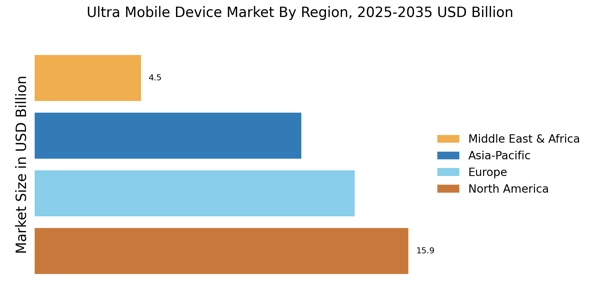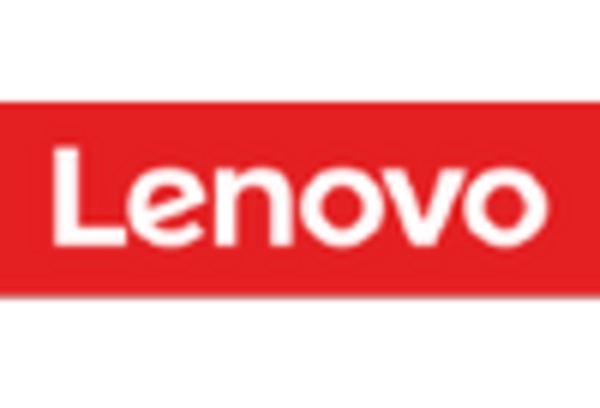Expansion of 5G Connectivity
The rollout of 5G connectivity is a significant driver for the Ultra Mobile Device Market, as it enhances the capabilities of mobile devices. With faster data speeds and lower latency, 5G technology enables seamless streaming, gaming, and communication. This advancement is likely to increase consumer demand for ultra mobile devices that can leverage these capabilities. Recent projections suggest that the number of 5G subscriptions will reach over 1 billion by the end of 2025, further fueling the growth of the Ultra Mobile Device Market. Manufacturers are thus focusing on developing devices that are 5G-ready, ensuring they meet the evolving needs of consumers.
Advancements in Battery Technology
Battery technology advancements play a crucial role in the Ultra Mobile Device Market, as they directly impact device performance and user experience. Enhanced battery life is a primary concern for consumers, and innovations in lithium-ion and solid-state batteries are addressing this need. Recent studies suggest that improvements in battery efficiency could extend usage times by up to 30%, making devices more appealing to users. As manufacturers invest in research and development, the Ultra Mobile Device Market is likely to witness a surge in devices that offer longer battery life, thereby enhancing user satisfaction and driving sales.
Rising Consumer Preference for Portability
The Ultra Mobile Device Market experiences a notable shift as consumers increasingly favor portability in their devices. This trend is driven by the growing need for on-the-go connectivity and convenience. As lifestyles become more mobile, users seek devices that are lightweight and easy to carry. Recent data indicates that the demand for ultra mobile devices has surged, with a projected growth rate of approximately 15% annually. This preference for portability is reshaping product designs, leading manufacturers to innovate and create devices that combine functionality with compactness. The Ultra Mobile Device Market is thus adapting to these consumer demands, resulting in a diverse range of products that cater to various user needs.
Growing Integration of AI and Machine Learning
The integration of artificial intelligence and machine learning technologies is transforming the Ultra Mobile Device Market. These technologies enable devices to offer personalized experiences, improving user engagement and satisfaction. For instance, AI-driven applications can optimize device performance based on user behavior, leading to more efficient resource management. Market analysis indicates that the adoption of AI in mobile devices is expected to increase by 25% over the next few years. This trend not only enhances functionality but also positions the Ultra Mobile Device Market at the forefront of technological innovation, attracting tech-savvy consumers.
Increased Focus on Health and Wellness Features
The Ultra Mobile Device Market is witnessing a growing emphasis on health and wellness features integrated into mobile devices. Consumers are increasingly seeking devices that not only serve communication purposes but also promote healthier lifestyles. Features such as fitness tracking, health monitoring, and wellness applications are becoming standard in ultra mobile devices. Market data indicates that the health tech segment is expected to grow by 20% annually, reflecting the rising consumer interest in health-oriented functionalities. This trend compels manufacturers to innovate and incorporate advanced health features, thereby enhancing the appeal of their products within the Ultra Mobile Device Market.


















Leave a Comment